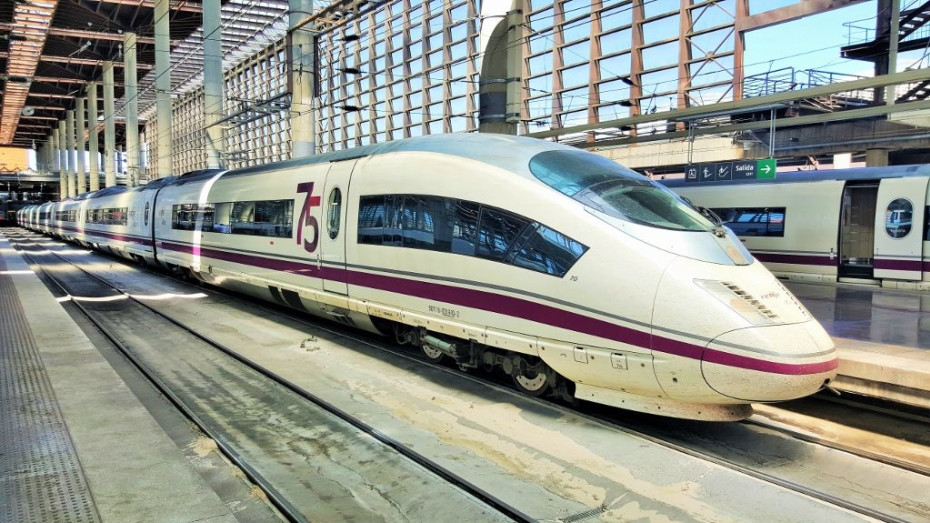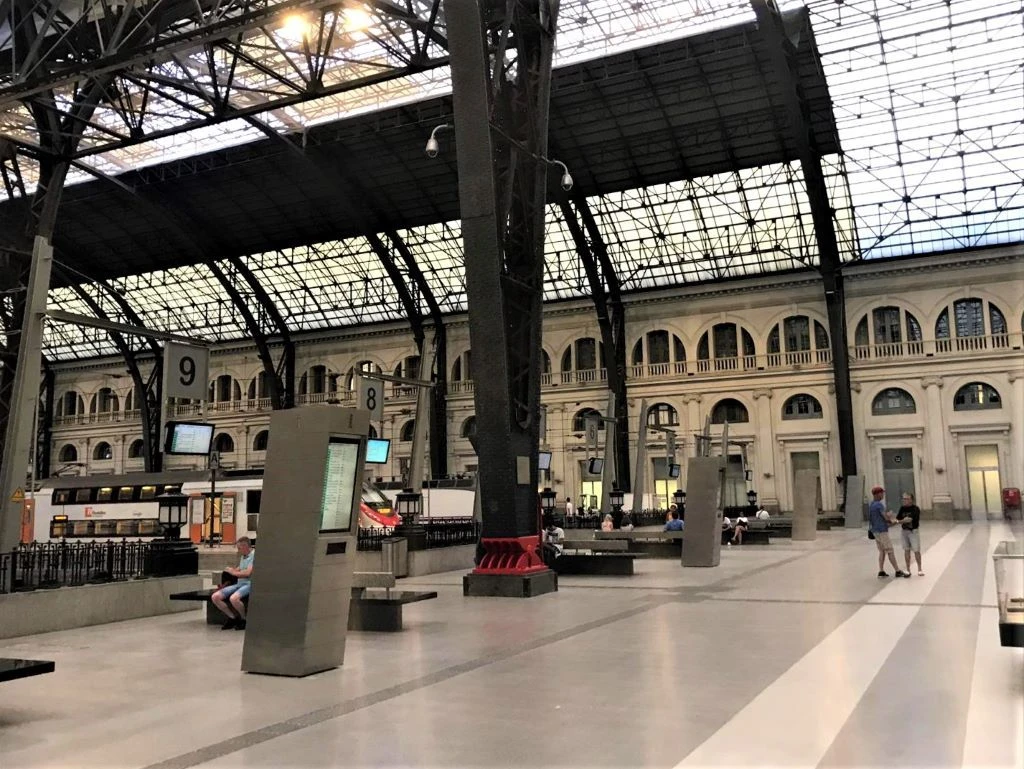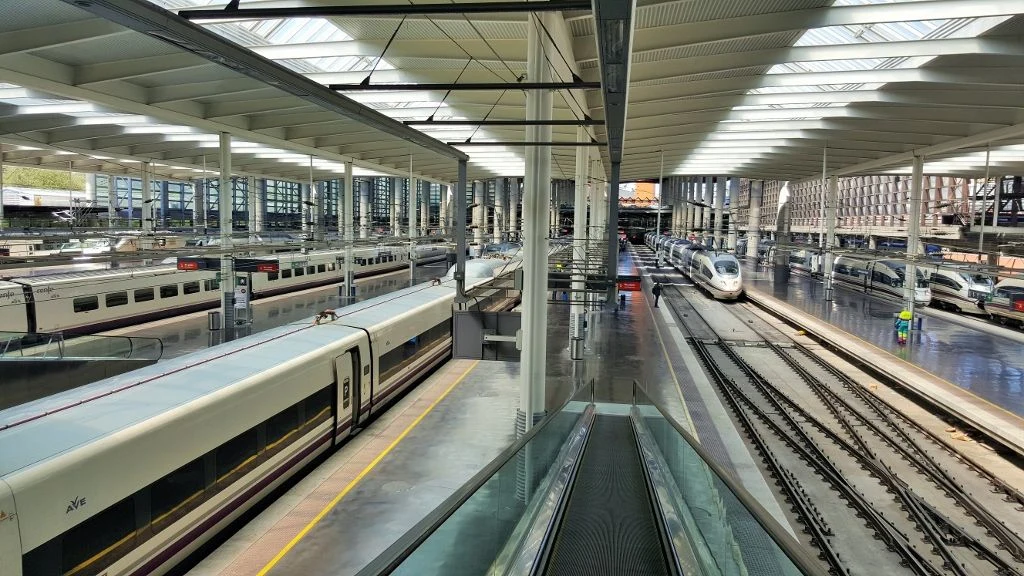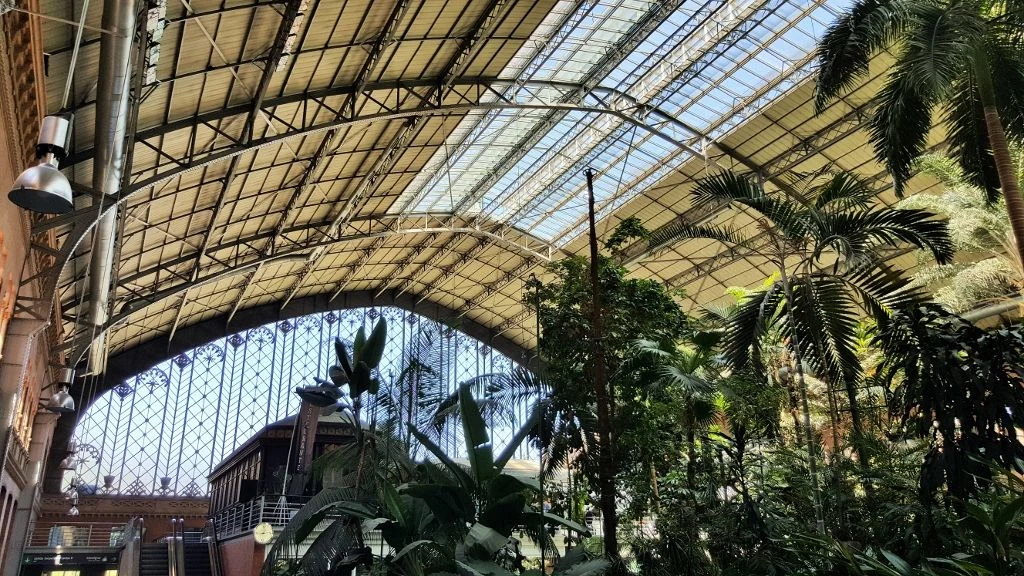Related Content
Content

Episode 17: The wild ride to Madrid
I'd saved the best for last on this trip, thanks to a journey with a wow factor
Share
Three factors contributed to the decision to stay in Girona instead of Barcelona,
- the room rates tend be much cheaper,
- the previous day’s travel from Menton was more than long enough,
- and on this day of traveI, I’d have plenty of time to explore Barcelona between trains.
Rail pass users have to pay comparatively expensive reservation fees to travel on Spanish high speed trains, therefore it didn’t particularly matter that I’d used up a 10 day Interrail pass to reach Girona, so was now buying tickets for my remaining journeys
Spanish national train operator Renfe’s ticket booking service is particularly quirky, but I’d managed to make a big saving by booking ahead for today’s two journeys.
I’d assumed that I’d be taking a Media-Distancia train from Girona to Barcelona, but the tickets for the high speed AVE train weren’t much more expensive, how thrilling!
Time well spent between trains
Barcelona Sants is a contender for Europe’s most bizarre major station, despite the part of the station used by the trains being buried underground, it doesn’t occupy a city centre location; so if you’ll want to access any of the tourist sites in the city from Sants station you’ll need to use its public transport connections.
Sants station is underground because trains use a tunnel to cross the city centre and the regional ‘Rodalies’ trains use other stations located along this tunnel, the Placa de Catalunya station is located at the top of the Ramblas, the tree-lined pedestrian street which runs through the heart of the city.
But most of the long-distance trains to and from Barcelona only use Sants station, the AVE train I'd just taken from Girona had passed through Placa de Catlayuna station without calling at it.
Though what can be worth being aware of when travelling around Europe by train, is that when arriving at a main station in the city, it can be a good idea to be open to the possibility that you won’t have to take a metro/subway, or taxi, on to your final destination.
Other cities that have central stations not used by long-distance trains include Berlin, Frankfurt, London, Madrid, Munchen, Paris and Zurich (and Bruxelles if you arrive on an international high speed train), though you may have to travel back to a station you have just passed through.
I wanted to head for Las Ramblas, but after studying the Barcelona Metro map and cross referencing it with Google Maps and looking up the journey on CityMapper, I figured out that taking the Metro was my best option.
Many metro maps can resemble bowls of spaghetti, but the system in Barcelona, with its looping lines is particularly extraordinary, so as consequence it’s worth checking whether taking a local ‘Rodalies’ train would be a better option.
For example, Barcelona’s beautiful Franca station used by some of the Rodalies trains is as close to the city’s beach as Barcelonetta metro station.

and heading to it by the Rodalies trains from Sants avoids the need to make a transfer between lines on the Metro.
Place de Catalunya station is a one station hop by Rodalies trains, but it’s a seven station ride from Sants on Metro line 3.
Despite line 3, being one of only two Metro Lines which serve Sants station, the other is Line 5 which connects Sants to the Sagrada Familia, what I was now discovering is that the part of the station used by Line 3 is a long, long walk from the main concourse.
Time it right and you could be stepping off a Rodalies train at Placa de Catalunya before you’d have even stepped on to the platform that the Line 3 trains depart from.
Line 3 took me to Liceu station, steps away from the Boqueira food market, where I enjoyed a brunch of tapas.

I made sure I was back at Sants station 45 minutes before my train left for Madrid, as I wanted to allow time to pick up my bags from the left luggage office and ‘check-in’ for the train.
The left luggage facility at Barcelona Sants operates similarly to those I’d encountered in France, an attendant screens the bags and then you collect them and take them to a coin-operated locker.
If you have hand luggage on you when you return to collect your bags, this will also need to be handed to the attendant for screening prior to being allowed to access the locker, so having observed these complications when depositing my suitcase, I’d factored in some contingency time.
A journey with a wow factor
(The videos were taken on a more recent trip when travelling in the opposite direction towards Barcelona)
My bags were screened again before boarding the AVE train, because taking an express train in Spain now involves a process not dissimilar to checking-in for a flight, you ticket will be checked pre-boarding, sometimes both before and after your bags are passed through a scanner – the key difference being that your luggage won’t be weighed.
The departure lounge in the part of the station used by the high speed trains at Sants (vias 1 -6 ) is similar to the gates at an airport.
You have to wait in line to enter this ‘lounge’ no matter which of these six vias (platforms/tracks) your train will be leaving from.
And it is your responsibility to allow time for this procedure to be carried out, you won’t be able to board if you’re still waiting in line for ‘check-in’.
So adopt a similar mind-set as you would when catching a flight and for peace of mind aim to be at Sants station 20 – 30 minutes prior to your departure time.
The parallels with taking a flight also extend to buying tickets for the AVE high-speed trains on the Barcelona <> Madrid route.
Airline-style pricing is utilised by Renfe for its high speed routes, so departures which are popular, particularly with business travellers, are more expensive
However, on this route the price difference between different AVE departures can be particularly extreme, it’s possible to save more than €40 by travelling on a train departing in the middle of the day, no matter how far ahead you book.
Tickets to travel by the AVE trains are also comparatively expensive on this route, so using rail passes + paying the reservation fees isn’t extortionate, particularly in 2nd class.
The ticket prices can be partially justified by the €9billion cost of a construction project, which spanned 13 years
Worth every piece of the herculean effort as the high speed train journey between Barcelona and Madrid is undoubtedly fantastic.
The landscape as you cross to the heart of Spain doesn’t offer the majesty of a mountainous region such as the Alps or Pyrenees, but it has a dramatic other-worldly quality.
On an ordinary train ride these sweeping vistas across the plains of Spain could become rather monotonous, but racing across them at more than 300 km/h transforms them into a thrilling spectacle.
What gives the Barcelona <> Madrid train ride its wow factor is the trains are travelling exceptionally fast.
There is no set definition for high speed train travel, though the consensus is that trains which travel at 250 km/h or more meet the criteria and high speed lines are necessary for this speed to be attained, no European train travels at more than 230 km/h on conventional railway tracks.
Most of the high speed trains and lines in Europe have been engineered for speeds up to 350 km/h, but no European train regularly travels this fast and nor are they ever likely to.
Railway operators now tend to take the view that speeds above 280 km/h don’t apparently justify the additional energy consumption required to shave 15 – 30mins off a journey time.
Though TGV trains exceptionally travel up top 320 km/h on parts of the route between Paris and Strasbourg, probably because they set the train speed world record on that high speed line; and it helps form an impression that all TGVs reach such speeds.
To travel the 620 km/h from Barcelona to Madrid in only 2hr 30 mins, the AVE trains have to travel at around 300 km/h for most of the journey, so this route showcases the ultimate high speed European train travel experience.
In and out of Madrid
Those parallels with taking a flight also come into play on arrival at the mightily impressive Atochca station in Madrid.
For in Atocha station arriving and departing passengers are kept separate, when you step off the train you will normally be directed up moving walkways which ascend from the vias (platforms/tracks), but despite this need to change levels, all the exit routes from the station are step-free.

Depending on which part of the station your train will have arrived at you may also have to use a moving walkway to reach the main atrium in the station, which houses escalators and elevators which provide the access to the taxi ranks, metro station and the part of the station used by the local Cercanias trains.
You can also follow the signs to view the spectacular indoor garden at Atocha, but if you will be taking a taxi or Cercanias train, seeing it requires a diversion.

The Cercanias trains provide the easiest and quickest means of accessing many areas of central Madrid from Atocha.
Tickets won’t cost any more than the Metro and when arriving at Atocha on an AVE train, the route to the Cercanias trains is easier to follow than that to the metro.
Once you’re in the atrium to the side of the main station building, you can’t miss the Cercanias concourse, which will be below you.
And yes it will seem a tad bizarre to be heading back down through the levels in the station, having only just ascended, but it is a simple transfer.
Though you’ll need to buy a separate ticket for the journey by Cercanias trains, even if you will be using a rail pass.

Simon Harper
I wanted to share my passion for train travel and explain how anyone can take the fantastic journeys I have taken.

This is one of more than 100 train travel guides available on ShowMeTheJourney, which will make it easier to take the train journeys you want or need to make. As always, all images were captured on trips taken by ShowMeTheJourney.
This second version of ShowMeTheJourney is exciting and new, so we are genuinely thrilled that you are here and reading this, but we also need your help.
We’re striving not to let anything get in the way of providing the most useful service possible, hence a facility has been set up with DonorBox which can be used to support the running costs and make improvements.
Instead of advertising or paywalls, your financial support will make a positive difference to delivering an enhanced service, as there’s a lot of ideas which we want to make happen.
So if you have found the info provided here to be useful, please consider saying thank you.



